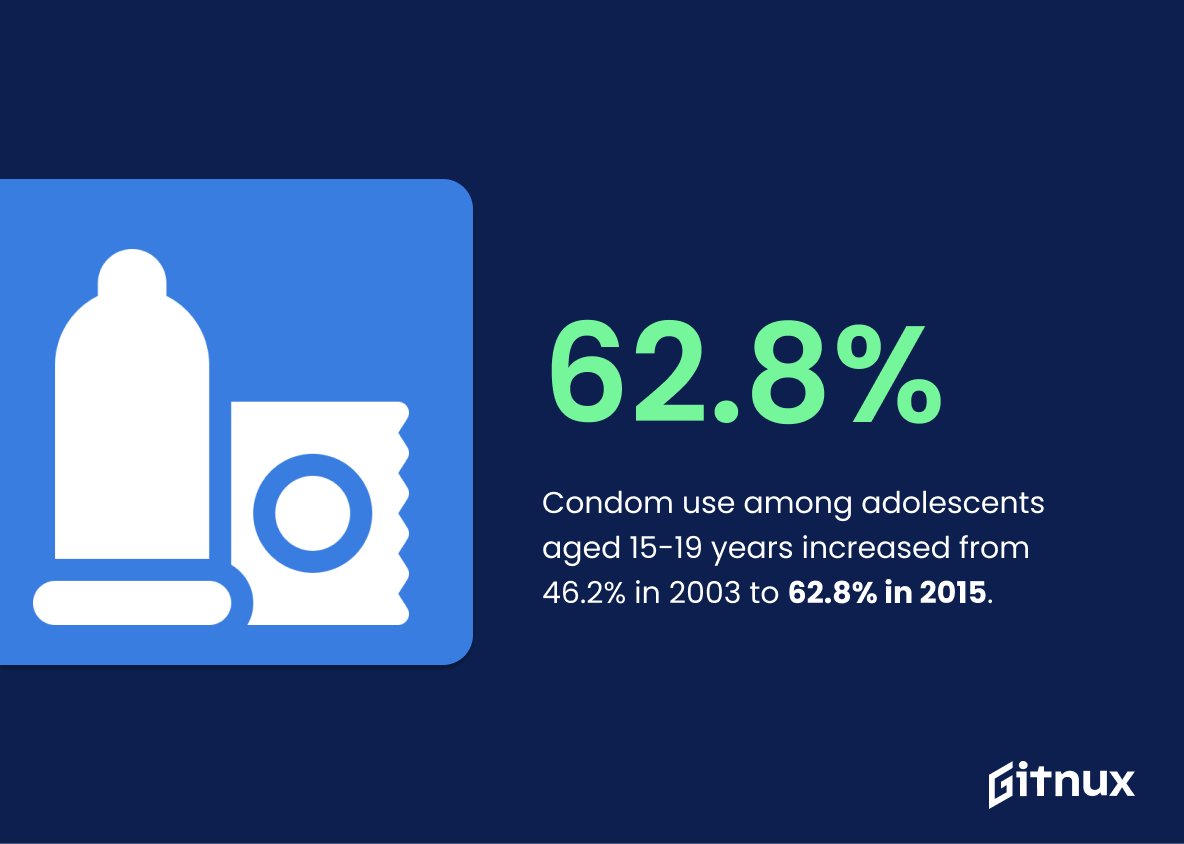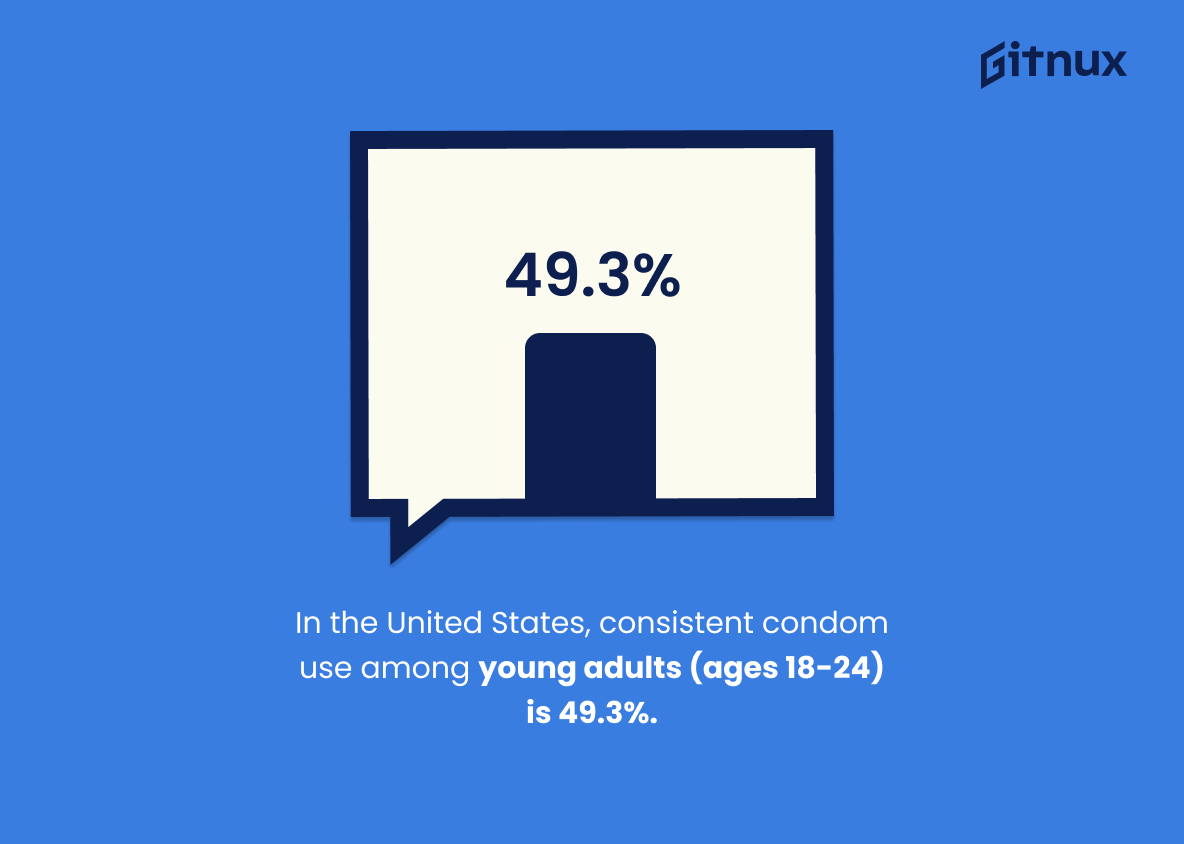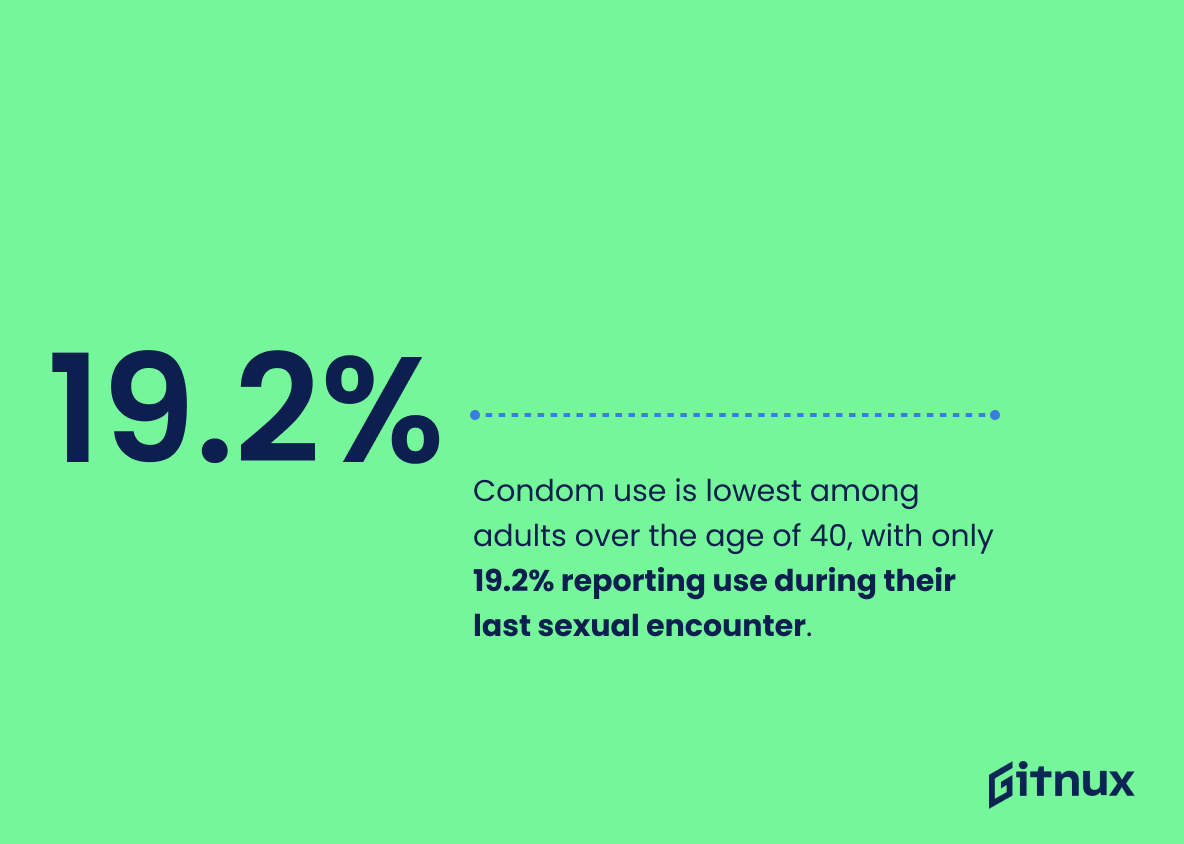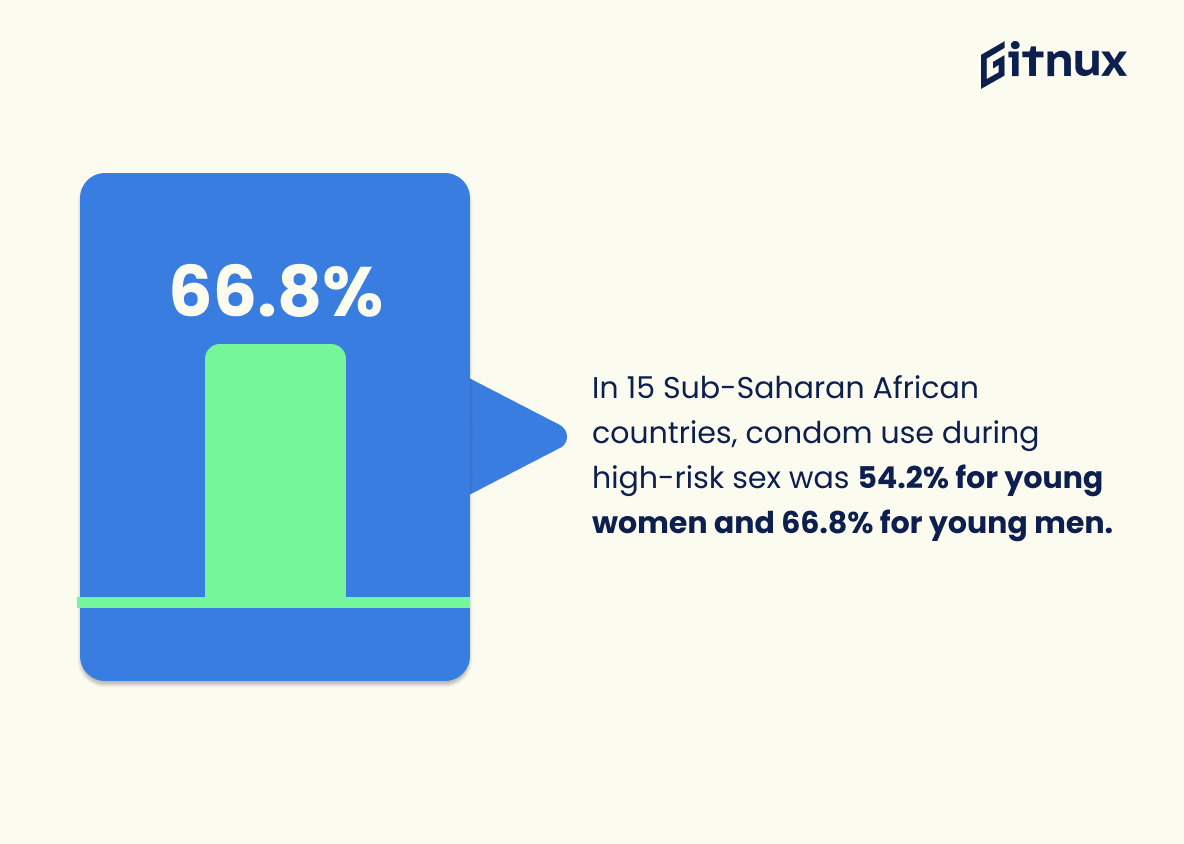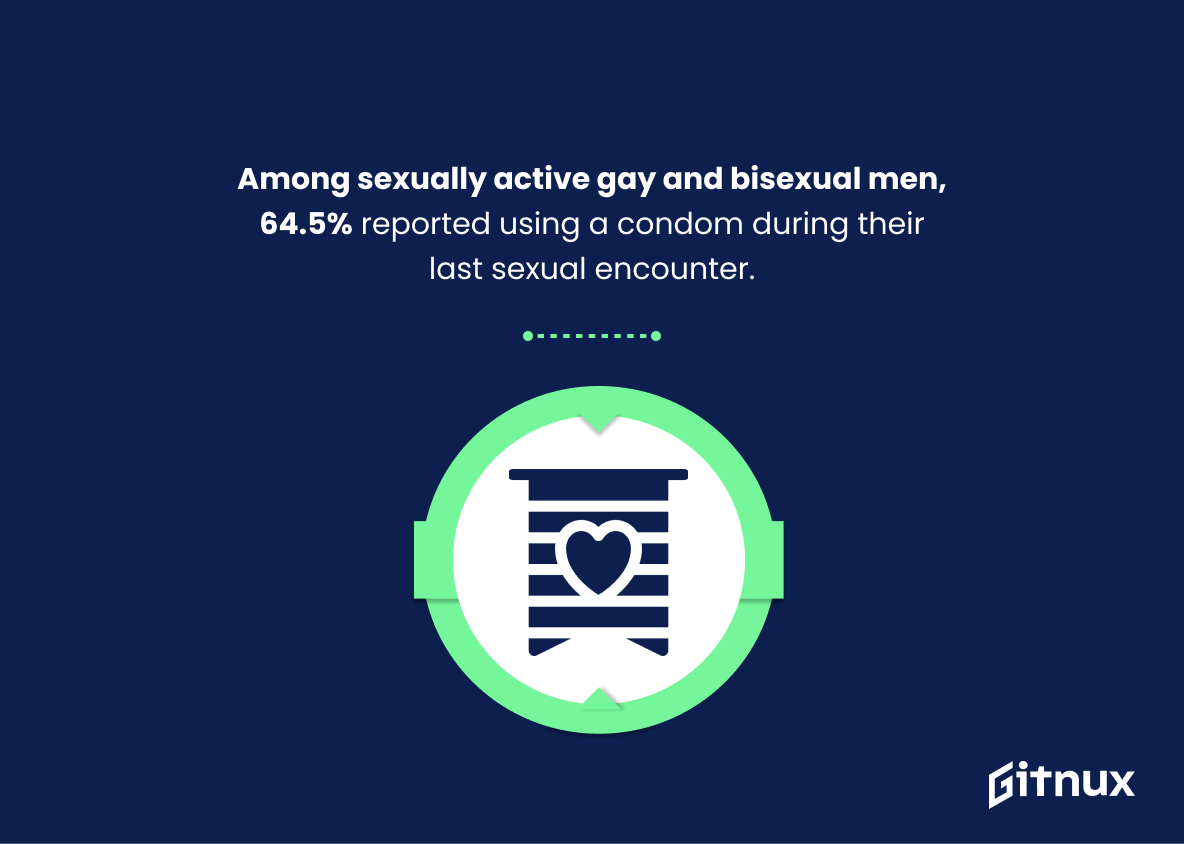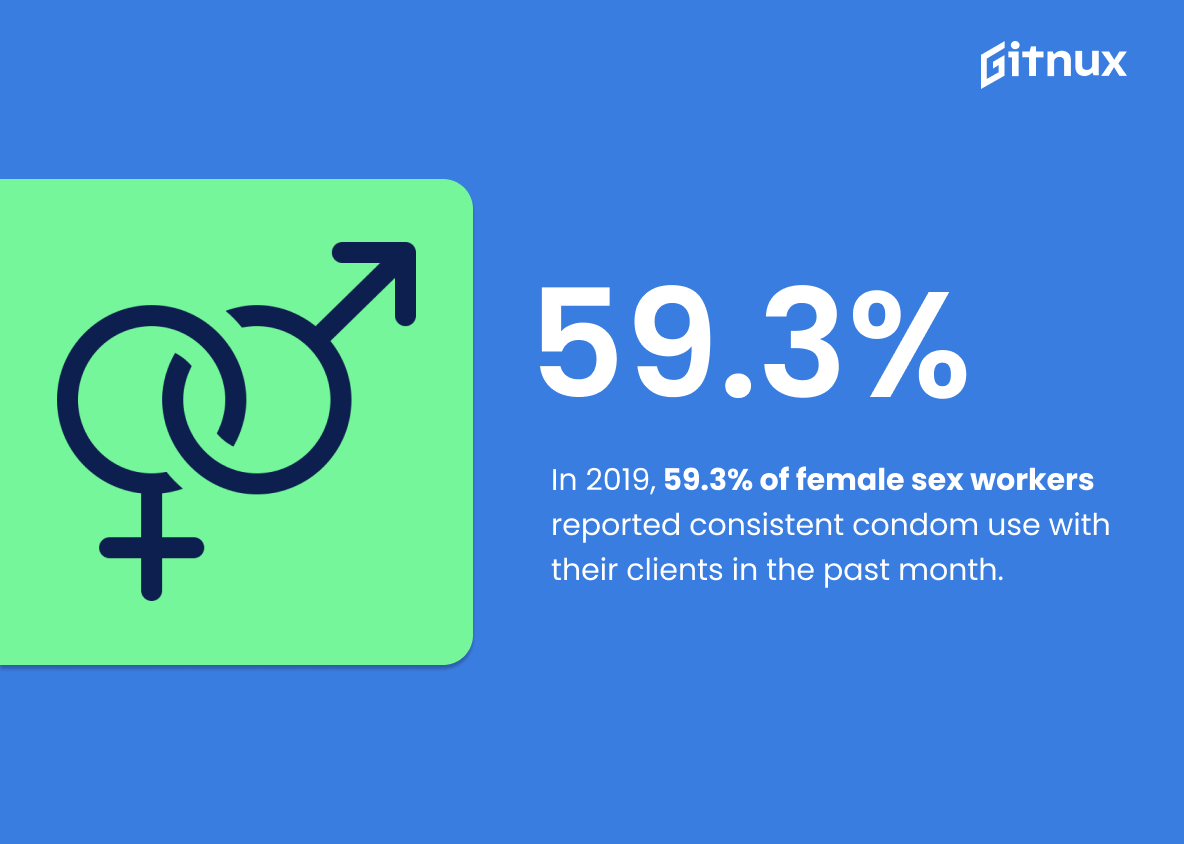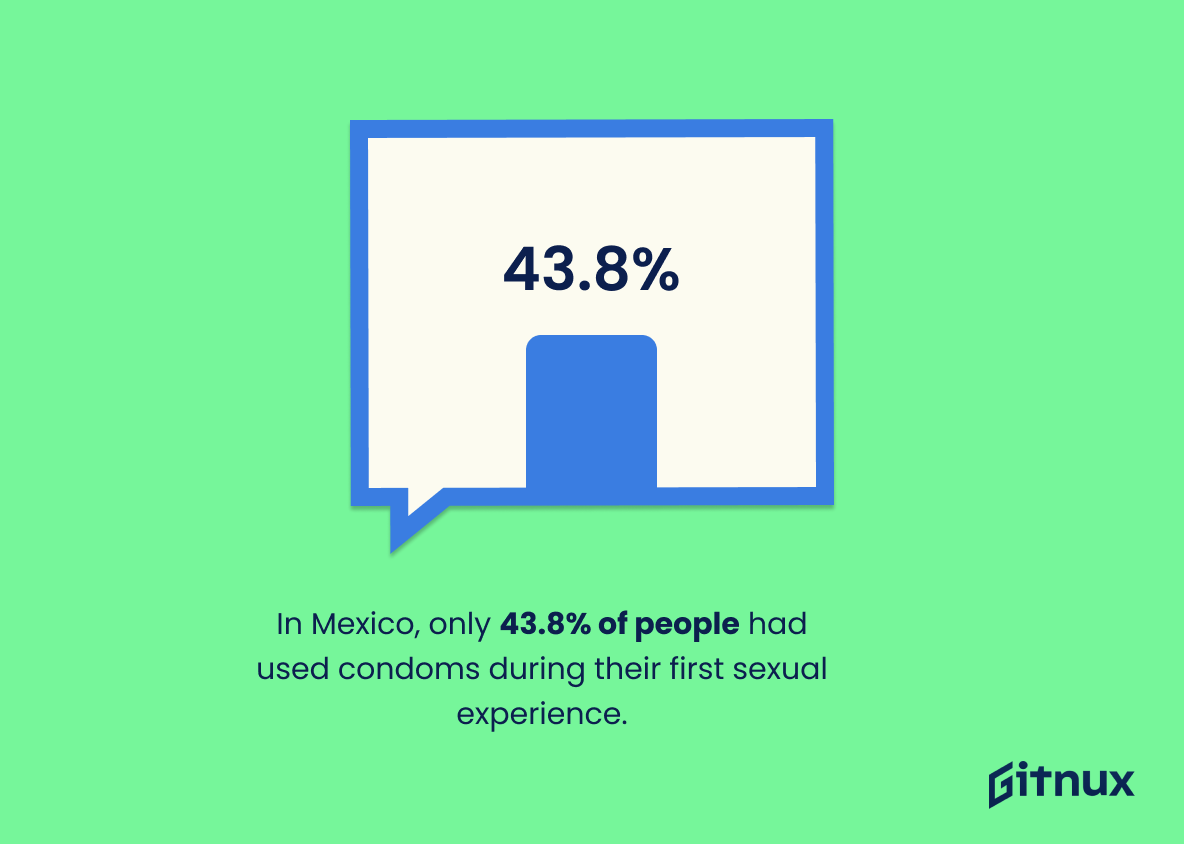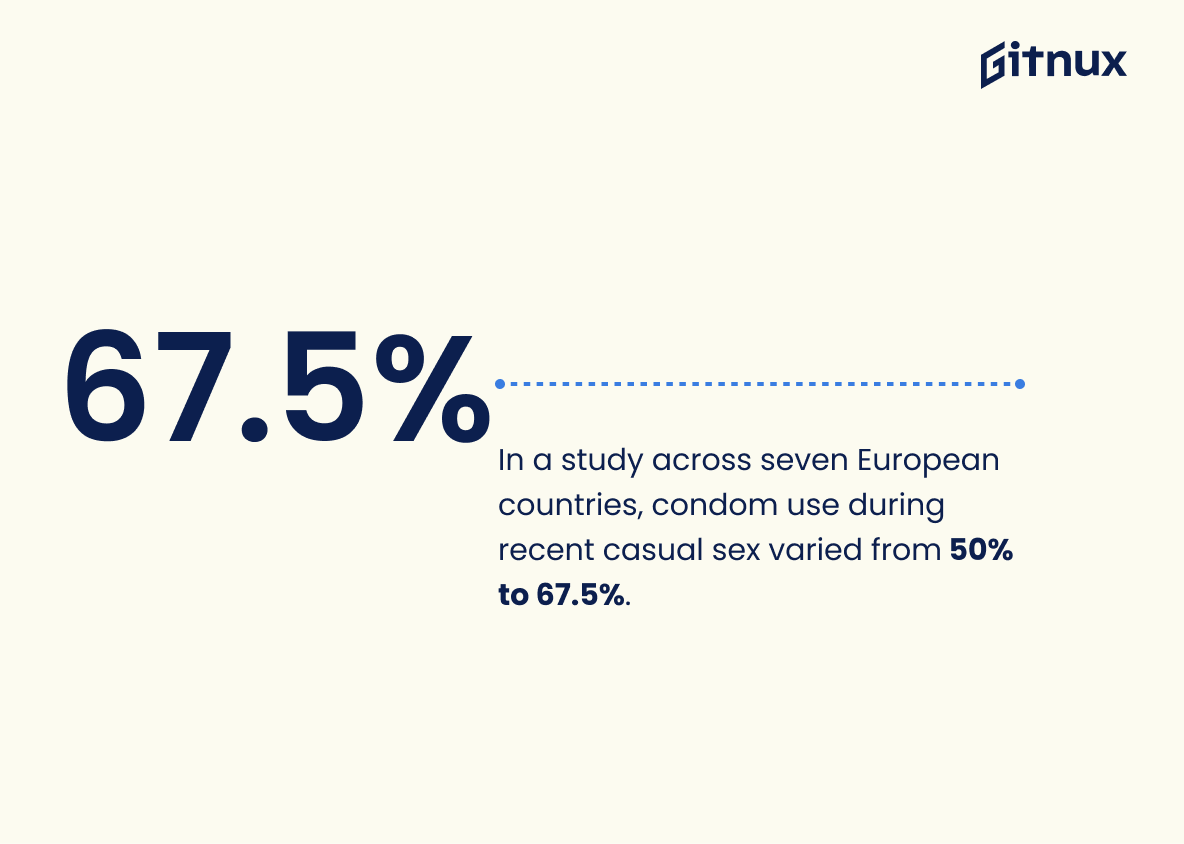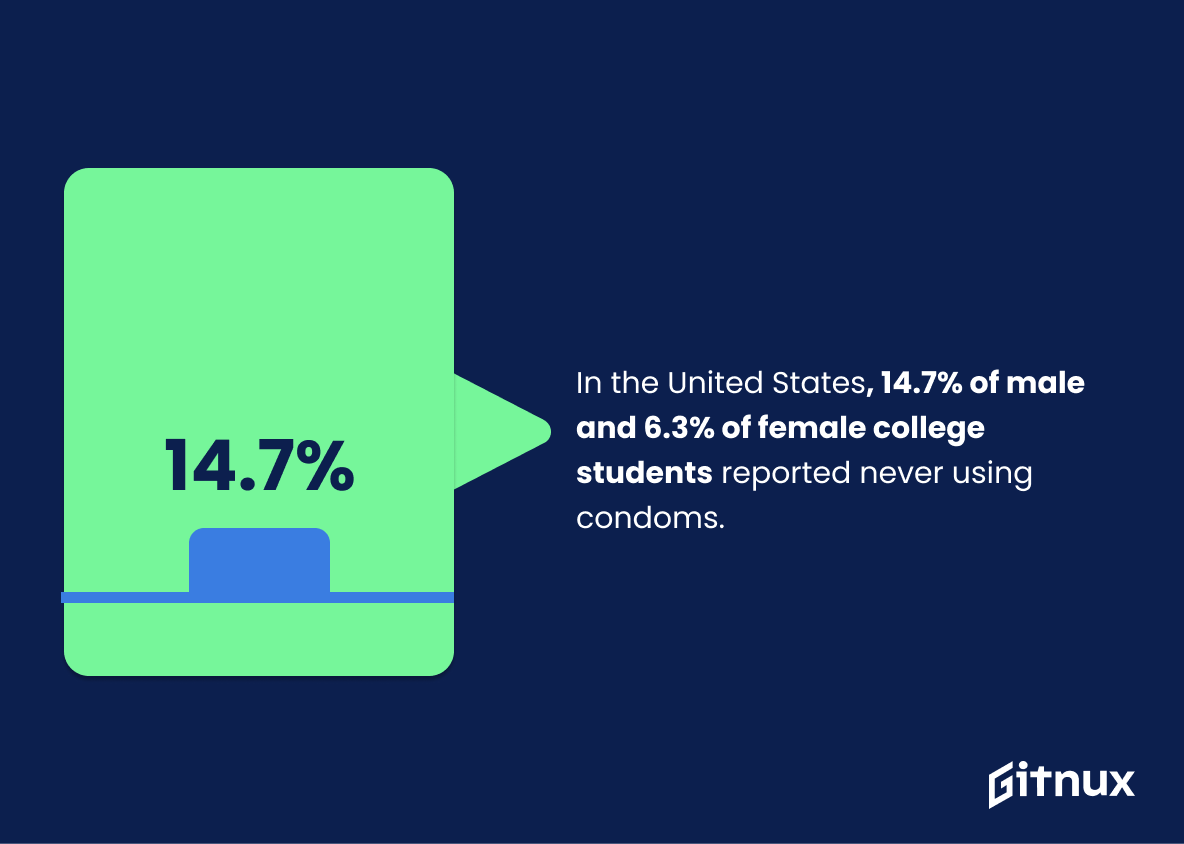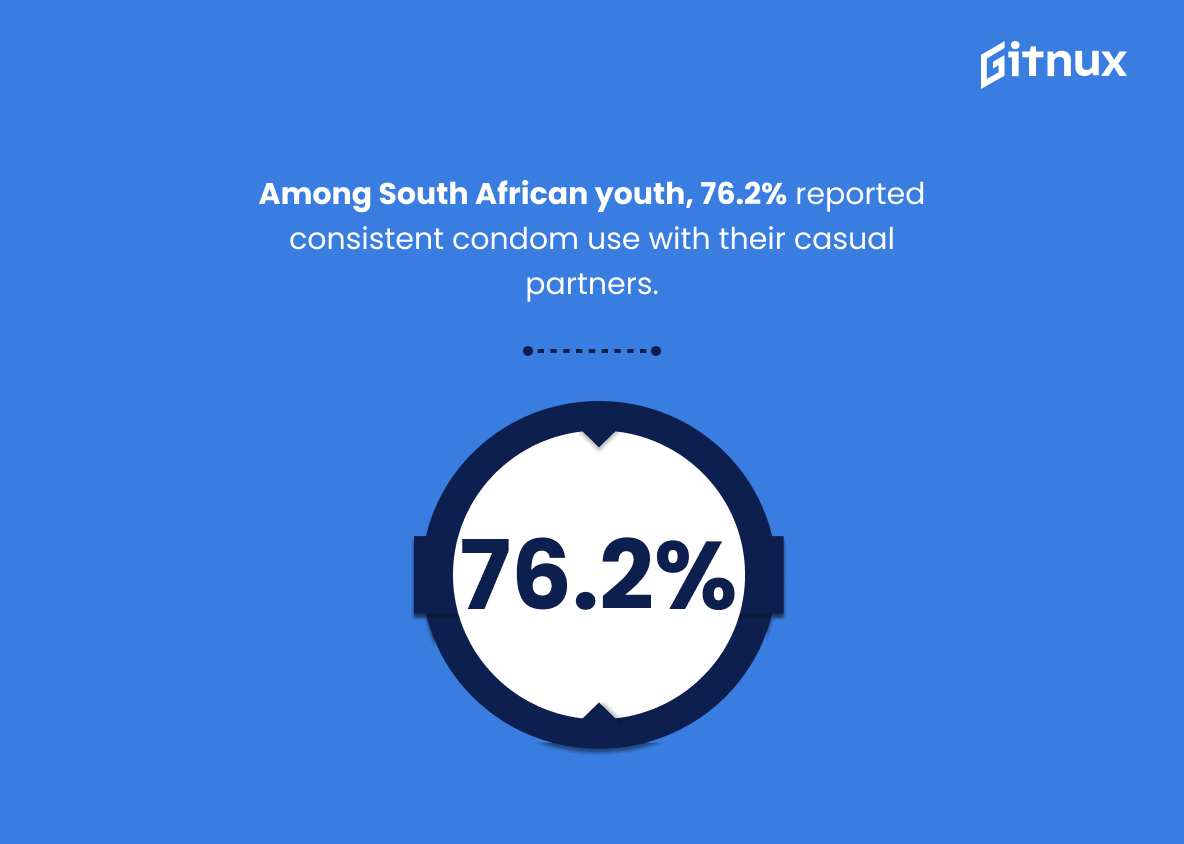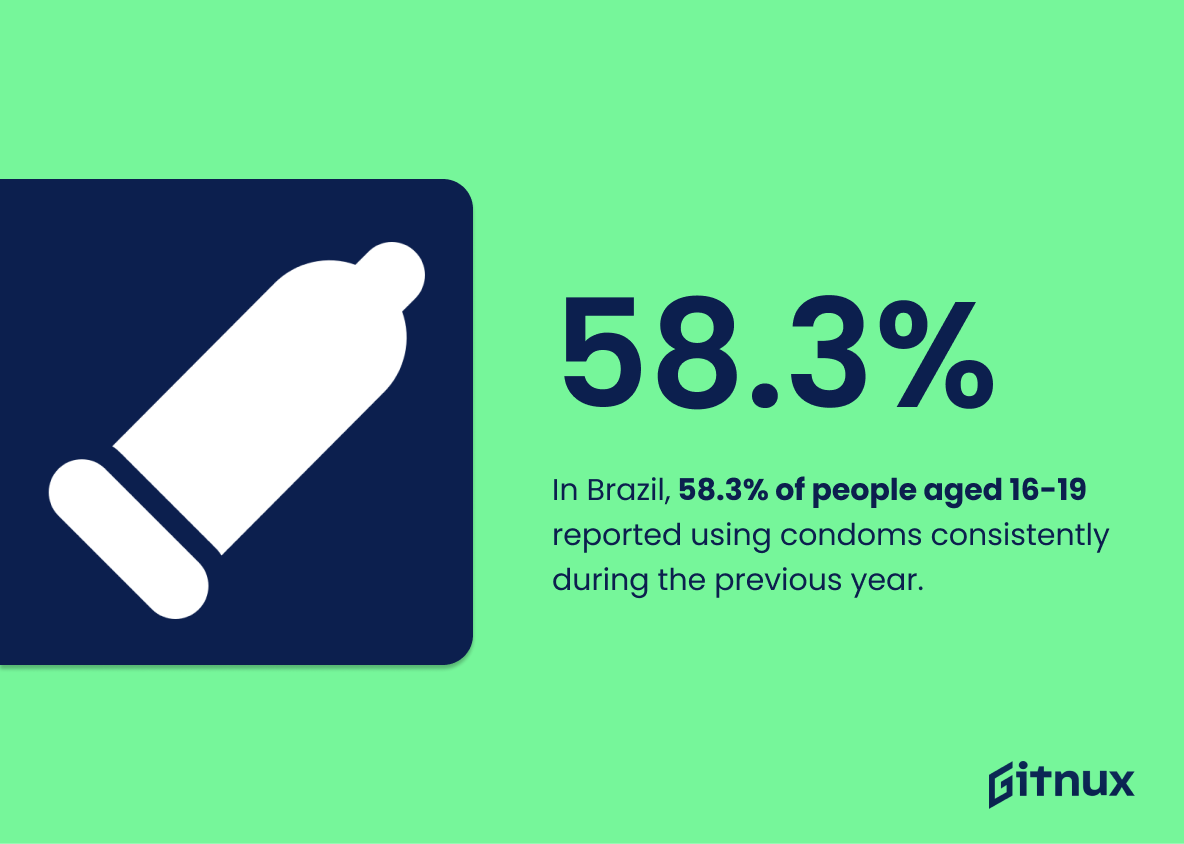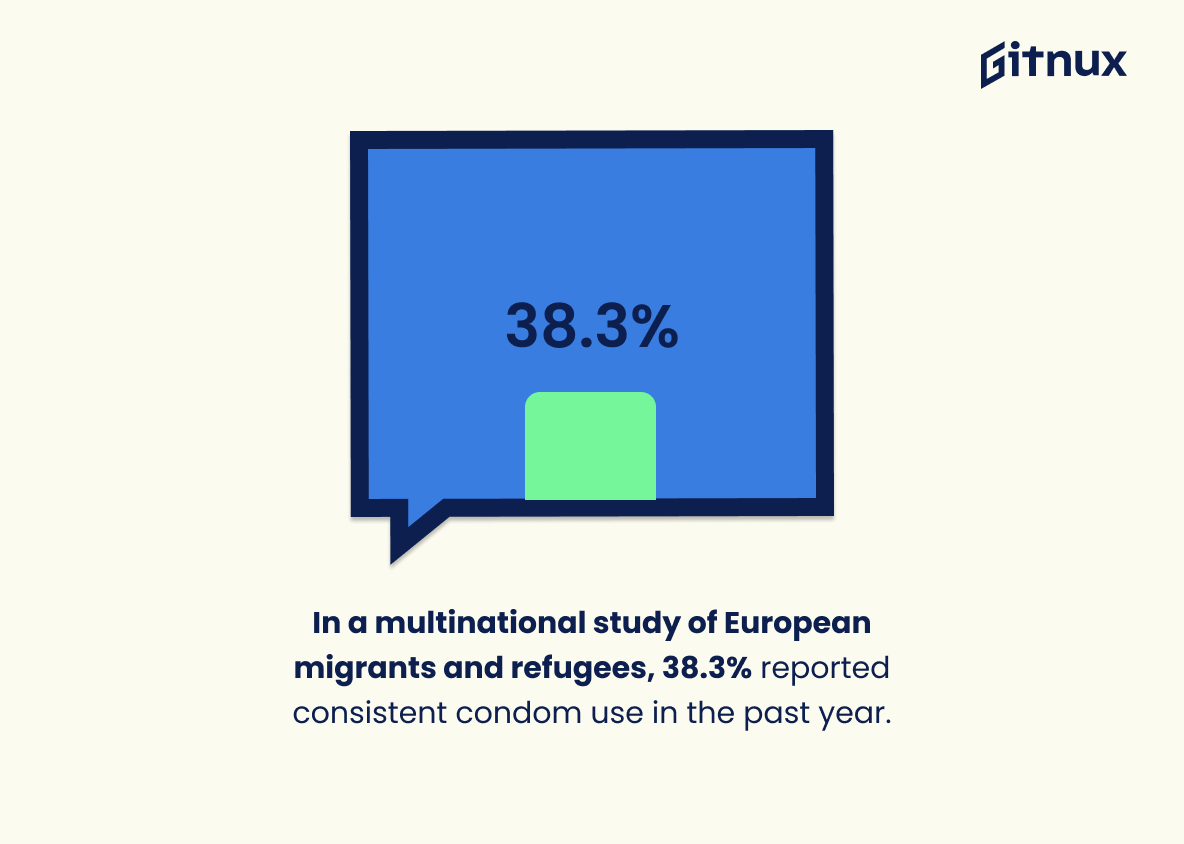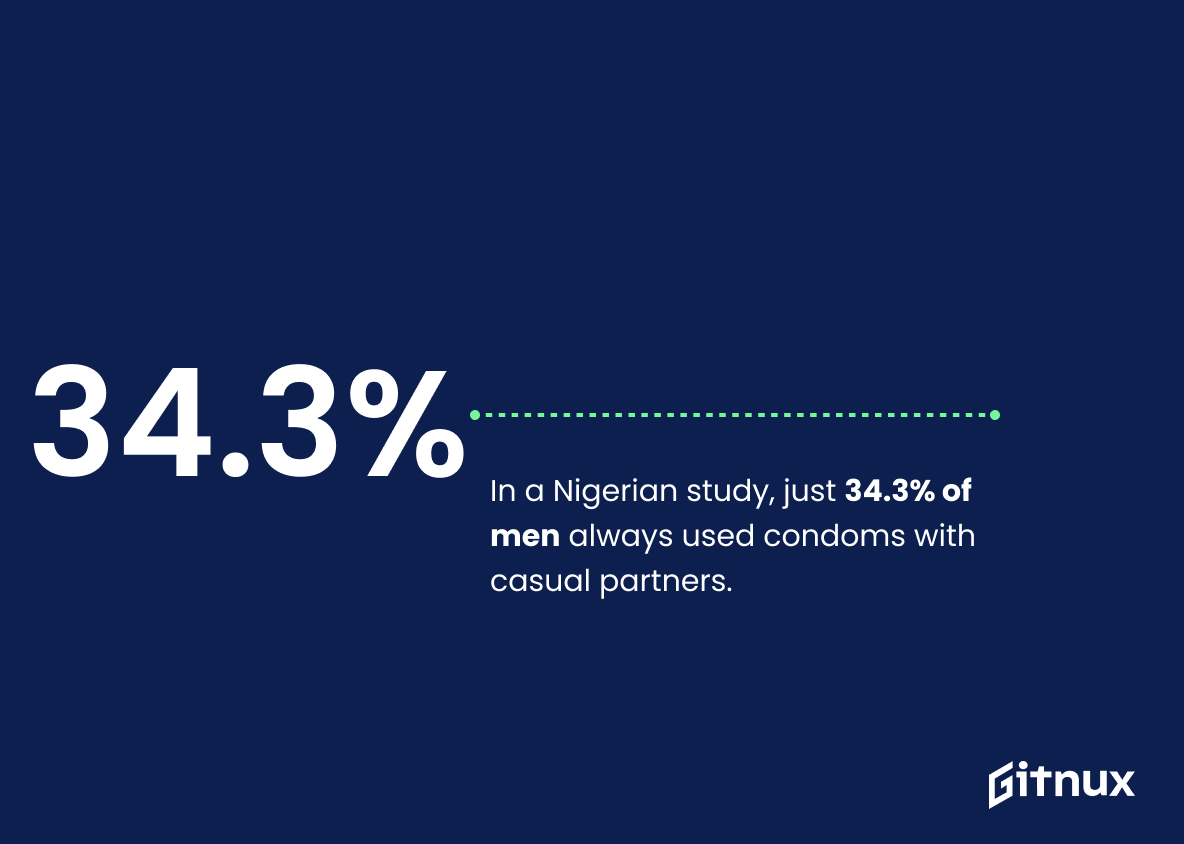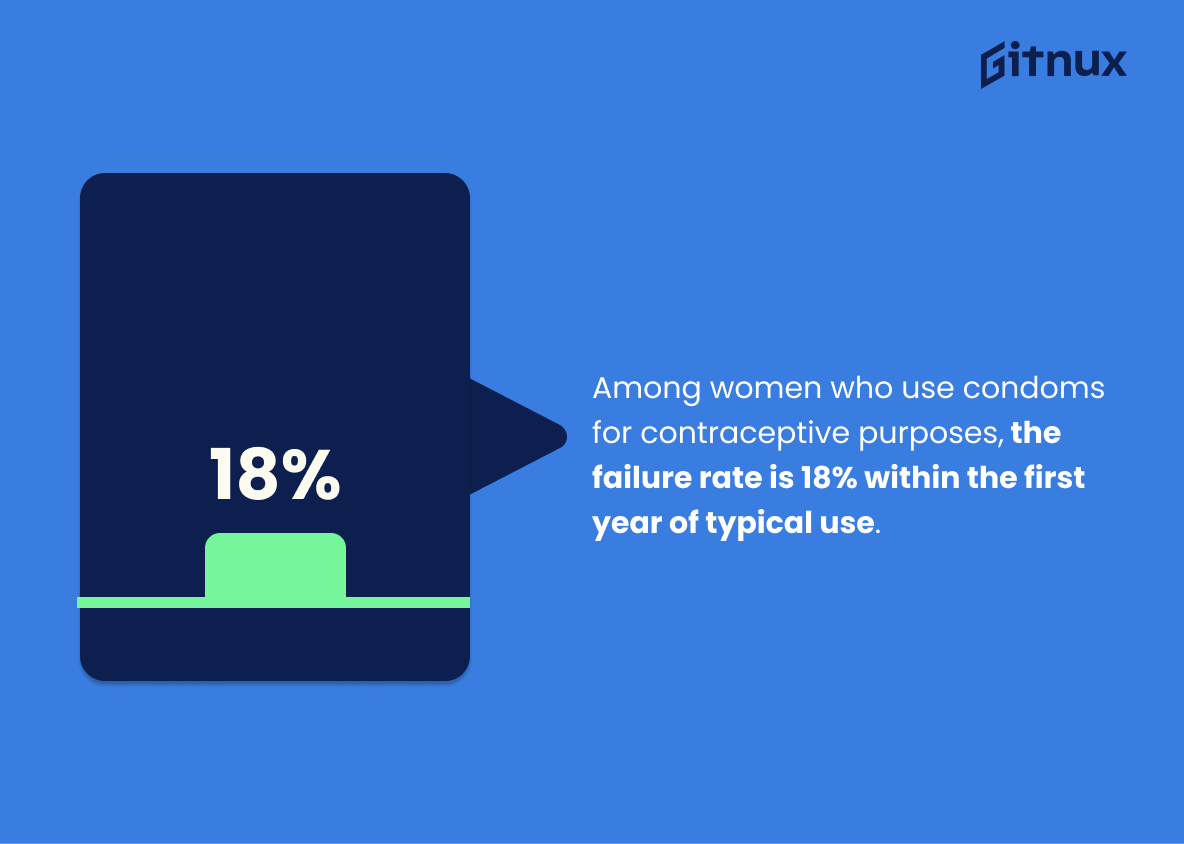Condom use is an important part of sexual health and can help reduce the risk of sexually transmitted infections (STIs) and unintended pregnancies. Despite this, many people do not always practice safe sex by using condoms consistently or correctly. In this blog post, we will explore condom use statistics from around the world to gain a better understanding of how often they are used in different populations. We’ll look at data on high school students, young adults, married women, gay/bisexual men, female sex workers, college students and more to get a comprehensive picture of global condom usage trends.
This statistic is a stark reminder of the importance of condom use among sexually active high school students. It highlights the need for greater education and awareness about the risks of unprotected sex and the importance of using condoms to protect against sexually transmitted infections and unintended pregnancies. It also serves as a call to action for parents, educators, and health professionals to ensure that young people have the information and resources they need to make informed decisions about their sexual health.
The global use of condoms is estimated to be around 27 billion condoms annually.
This statistic is a powerful reminder of the sheer scale of condom use around the world. It highlights the importance of condoms in protecting people from sexually transmitted infections and unwanted pregnancies, and serves as a reminder of the need for continued education and access to condoms.
Condom Use Statistics Overview
Condom use among adolescents aged 15-19 years increased from 46.2% in 2003 to 62.8% in 2015.
This statistic is a testament to the progress that has been made in promoting condom use among adolescents aged 15-19 years. It shows that more and more young people are taking responsibility for their sexual health and making informed decisions about their sexual activity. This is an encouraging sign that education and awareness campaigns are having a positive impact on the health and wellbeing of young people.
In the United States, consistent condom use among young adults (ages 18-24) is 49.3%.
This statistic is a telling indication of the importance of condom use among young adults in the United States. It shows that nearly half of young adults are taking the necessary steps to protect themselves and their partners from sexually transmitted infections and unwanted pregnancies. This statistic is a reminder that, while there is still work to be done, young adults are taking the initiative to practice safe sex.
Condom use is lowest among adults over the age of 40, with only 19.2% reporting use during their last sexual encounter.
This statistic is a stark reminder that adults over the age of 40 are not taking the necessary precautions to protect themselves from sexually transmitted infections. It is essential that this age group is educated on the importance of using condoms and the risks associated with not doing so.
In a study of 15 Sub-Saharan African countries, condom use at last high-risk sex was 54.2% for young women and 66.8% for young men.
This statistic is a powerful reminder of the importance of condom use in Sub-Saharan African countries. It highlights the disparity between young women and young men in terms of condom use, with young men being more likely to use condoms than young women. This is a concerning trend, as it could lead to higher rates of sexually transmitted infections and unintended pregnancies among young women. This statistic is a call to action for governments, health organizations, and individuals to work together to ensure that young women have access to the resources and education they need to make informed decisions about their sexual health.
Among sexually active gay and bisexual men, 64.5% reported using a condom during their last sexual encounter.
This statistic is a powerful reminder of the importance of condom use among sexually active gay and bisexual men. It shows that a majority of these men are taking the necessary steps to protect themselves and their partners from the risks of unprotected sex. This statistic is a testament to the effectiveness of education and awareness campaigns that promote safe sex practices.
In 2019, 59.3% of female sex workers reported consistent condom use with their clients in the past month.
This statistic is a powerful indicator of the effectiveness of public health initiatives to promote safe sex practices among female sex workers. It shows that the majority of female sex workers are taking the necessary steps to protect themselves and their clients from the risks of unprotected sex. This statistic is a testament to the importance of providing education and resources to sex workers to ensure that they are able to make informed decisions about their sexual health.
In Mexico, only 43.8% of people had used condoms during their first sexual experience.
This statistic is a stark reminder of the need for increased education and awareness about the importance of using condoms during sexual activity. It highlights the fact that a large portion of the population in Mexico is not taking the necessary precautions to protect themselves from sexually transmitted infections and unwanted pregnancies. This statistic is a call to action for those in the public health sector to work towards increasing condom use in Mexico and other countries.
In a study of seven European countries, condom use during the most recent casual sexual encounter ranged from 50% to 67.5%.
This statistic is a powerful indicator of the effectiveness of condom use in Europe. It shows that even in countries with different levels of access to contraception, people are still taking the initiative to protect themselves and their partners. This is a positive sign that people are taking their sexual health seriously and are taking steps to reduce the risk of sexually transmitted infections.
In the United States, 14.7% of male and 6.3% of female college students reported never using condoms.
This statistic is a stark reminder of the gender disparities in condom use among college students in the United States. It highlights the need for more education and awareness about the importance of safe sex practices, particularly among male college students. It also serves as a reminder that there is still much work to be done in order to ensure that all college students are taking the necessary steps to protect themselves and their partners from sexually transmitted infections.
Among South African youth, 76.2% reported consistent condom use with their casual partners.
This statistic is a testament to the fact that South African youth are taking the necessary steps to protect themselves and their partners from the risks of unprotected sex. It is a positive sign that the youth are aware of the importance of safe sex and are taking the necessary precautions to ensure their health and well-being. This statistic is a reminder that education and awareness are key to promoting safe sex practices.
In Brazil, 58.3% of people aged 16-19 reported using condoms consistently during the previous year.
This statistic is a testament to the importance of condom use in Brazil. It shows that a majority of young people are taking the necessary steps to protect themselves and their partners from sexually transmitted infections and unwanted pregnancies. This statistic is a positive sign that Brazil is taking the issue of sexual health seriously and is actively promoting safe sex practices.
In a multinational study of migrants and refugees in Europe, 38.3% reported consistent condom use in the past 12 months.
This statistic is a powerful indicator of the importance of condom use among migrants and refugees in Europe. It shows that a significant portion of this population is taking steps to protect themselves and their partners from sexually transmitted infections. This statistic is a reminder that education and access to condoms are essential for the health and safety of this vulnerable population.
In a study of condom use among Nigerian men, only 34.3% reported always using condoms during sex with their casual partners.
This statistic is a stark reminder of the need for increased education and access to condoms in Nigeria. It highlights the fact that the majority of Nigerian men are not taking the necessary precautions to protect themselves and their partners from sexually transmitted infections. This is a concerning statistic that should be addressed in order to ensure the health and safety of the Nigerian population.
Among women who use condoms for contraceptive purposes, the failure rate is 18% within the first year of typical use.
This statistic is a crucial piece of information when it comes to discussing condom use statistics, as it provides insight into the effectiveness of condoms as a contraceptive. It is important to note that the failure rate of 18% is within the first year of typical use, which means that the rate could be higher or lower depending on the length of use. This statistic is essential in understanding the efficacy of condoms as a contraceptive and can help inform decisions about which contraceptive methods are best for different individuals.
In a study conducted in China, only 40% of sexually active college students reported using a condom during their most recent sexual encounter.
This statistic is a stark reminder of the importance of condom use in preventing the spread of sexually transmitted infections and unwanted pregnancies. It highlights the need for greater education and awareness about the importance of using condoms, especially among college students who are more likely to be sexually active. It also serves as a warning that, without proper protection, the consequences of unprotected sex can be dire.
Condom use in the United States has increased from 9.1% in 1985 to 23.7% in 2015 among women ages 15-44.
This statistic is a testament to the progress that has been made in the realm of sexual health and contraception. It shows that more and more women are taking responsibility for their own sexual health and making sure that they are protected. This is an encouraging sign that more people are becoming aware of the importance of safe sex and the need to take precautions.
In Ethiopia, only 34.60% of adults aged 15-59 reported using condoms during their most recent sexual experience with a non-marital, non-cohabiting partner.
This statistic is a stark reminder of the need for increased education and access to condoms in Ethiopia. It highlights the fact that the majority of adults in Ethiopia are not using condoms during their most recent sexual experience, which could lead to an increase in the spread of sexually transmitted infections and unintended pregnancies. This statistic is a call to action for those in the public health sector to take steps to ensure that condoms are more widely available and that people are educated on the importance of using them.
Conclusion
The statistics presented in this blog post demonstrate that condom use is a global issue, with varying levels of usage across different countries and demographics. While some populations have seen an increase in the rate of consistent condom use over time, there are still many areas where it remains low or even nonexistent. It is clear from these numbers that more needs to be done to promote safe sex practices around the world and ensure access to condoms for all who need them.
References
0. – https://www.who.int
1. – https://www.link.springer.com
2. – https://www.sti.bmj.com
3. – https://www.cdc.gov
4. – https://www.statista.com
5. – https://www.ncbi.nlm.nih.gov
6. – https://www.pubmed.ncbi.nlm.nih.gov
7. – https://www.guttmacher.org
8. – https://www.data.unicef.org
